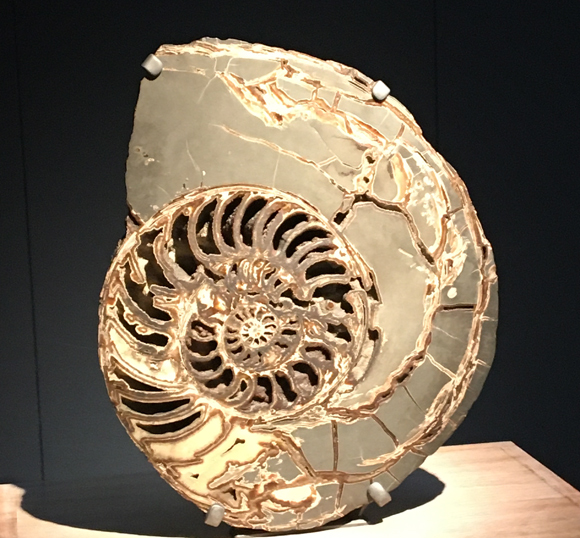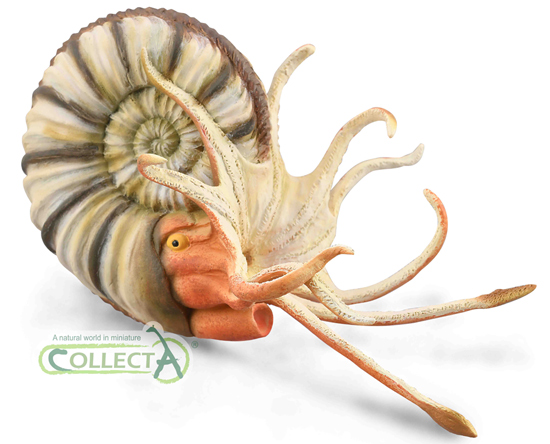Astonishing Ammonites
A quick trip to the London Natural History Museum to gain some inspiration for a project that Everything Dinosaur team members have been invited to participate in. Once there and with our mission accomplished, there was just time to take a look at some of the superb fossil exhibits on display adjacent to the Earth Hall and the British Geological Survey display. It was like meeting old friends again with a chance to admire the Megatherium specimen and the amazing marine reptiles within the “Green Zone”. One of our favourite specimens, is this cross-section of a substantial ammonite.
With all those chambers exposed , the fossilised remains of this large marine invertebrate remind us of a piece of modern art.
A Beautiful Ammonite Fossil on Display

Picture credit: Everything Dinosaur
The Ammonite Asteroceras stellare?
We suspect that this is an example of Asteroceras stellare, an ammonite species associated with the Lower Jurassic of Europe from around 195 to 188 million years ago. Some specimens of A. stellare have shells nearly a metre in diameter. Gigantism in cephalopods has arisen on numerous occasions during the long evolutionary history of this Class of the Mollusca. Today, we have the giant squid (Architeuthis), whilst in the Ordovician, one of the world’s first super-predators was a cephalopod, the enigmatic Cameroceros.
An Ammonite Model – Pleuroceras
The image (above) shows the CollectA Popular Pleuroceras ammonite model.
To view this range of prehistoric animal figures: CollectA Prehistoric Life.
As for why some types of ammonite grew so large, whilst most could comfortably fit in the palm of your hand, remains a mystery. Scientists are uncertain as to what environmental factors are the driving forces in the evolution of giant forms in some types of animal, however, such large animals could be linked to a bountiful supply of oxygen in the atmosphere and subsequently dissolved in sea water.
The specimen on display at the Natural History Museum, may not be the biggest ammonite fossil, but to us we think it is one of the most beautiful exhibits to be seen in the whole of the Earth Hall.
Visit the award-winning Everything Dinosaur website: Everything Dinosaur.







Leave A Comment